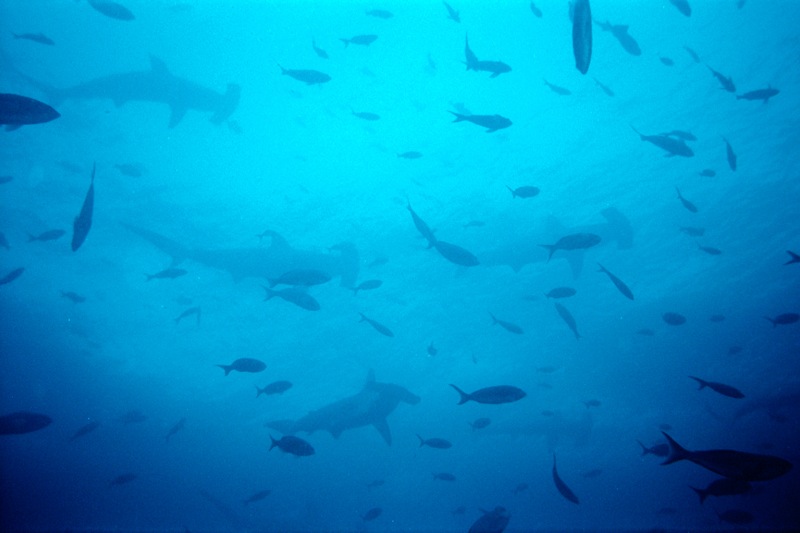Diving is one of the most intense and enjoyable activities to do. There are many places around the world to practice diving and each one of those places has its magic, that is the beauty of diving, to explore the waters of magical places.
Among the many places around the world you can do diving, there are some that can be listed as the greatest places to practice diving. This is the list.
RANGIROA ATOLL (South Pacific, French Polynesia): there is much more to do here than dive: The arid coral islands of the atoll of Rangiroa in the middle of the largest ocean in the world offers anything other than sky and sea.
The most famous dive site of the second-largest atoll in the world is the Tiputa Pass, a channel connecting the lagoon to the open sea. Many gray reef sharks, much more hammerheads, eagle rays, stingrays, dolphins, sea turtles, and large quantities of colorful fish.
Resources
Dive Tahiti Blue

THE SOUTH OF THE SINAI (Red Sea, Egypt), the southern tip of the Sinai peninsula remains one of the best dive sites world. Reefs that go down to 750 meters, desert mountains that crash with coral reefs, sunk ships to explore, this is one of the best places to do diving.
Resources
Sinai Divers
Dive Club
RAJA AMPAT (Indo-Pacific, Indonesia), the biodiversity of the reefs of Raja Ampat has no equal in the world, nowhere in the rest of the world, you will find the diversity of fishes and corals that can be found in Raja Ampat.
Reefs and barriers are located near the coast, shallow lagoons, deep walls, and along the coastal mangroves that host many marine animals.
Papua Diving
Dive Raja Ampat
Large kelp beds, cliffs where yellow and red corals proliferate, mers of several meters, caves, and wrecks, and a great diversity of pulps, lobsters, and fishes make this place a great destination to do diving.
Resources
Real Costa Brava
CARRIACOU (Caribe, Grenada), the island of Carriacou offers everything that makes the reefs of the Caribbean something special and that makes them look like underwater gardens, even more than the reefs of the Indo-Pacific. Huge reefs and sponges whose channels grow in water like logs.
And if it is not sufficient reefs for you, you should move to the waters of the neighboring island of Grenada, home to one of the most impressive wrecks in the world: cruise "Bianca C", 180 meters in length.
From the light-colored sandy bottom at a depth of 55 meters, stands in the stunning blue waters its impressive bow. When this stunning panorama is contemplated, you understand the second name of the sunken liner, the "Titanic of the Caribbean".
Deefer Diving
Arawak Divers
ANTARCTIC OCEAN: Beneath the ice of the Southern Ocean, off the coast of the frozen continent, there is a unique fauna that is clearly distinguishable from adjacent oceans and, interestingly, is very colorful.
Descending through a hole in the ice into the gloom of the sea is an experience that will surely excite lovers of diving, despite temperatures around freezing.
Antarctica Bound
BRITISH COLUMBIA (North Pacific, Canada): The coast of British Columbia in Canada is considered the best cold-water dive site in the world.
Everything here is somewhat larger, anemones, marine carnations, and giant Pacific octopus, which have a size of up to three meters.
The nicest place is Row and Be Damned, a cliff near Quadra Island where the tidal always carries abundant food. The Kelp forests of the American Pacific coast are unique.
Resources
Diving BC
NORWAY (North Atlantic): In the land of the fjords the underwater world is as impressive as above. A dip in the Strait of Saltstraumen near the town of Bodo is an extraordinary experience: here, the tidal current is the strongest in the world.
At a speed of up to 48 kilometers per hour, the sea pushes approximately every six hours more than 375 million cubic meters of water through the narrow strait.
The diver can see here haddock and cod banks, catfish, monkfish, and turbot, plus slugs, multicolored anemones, and kelp forests attached to the rocks.
Resources
Diving Norway

GALAPAGOS ISLANDS (Pacific Ocean, Ecuador): Its wildlife inspired Charles Darwin to develop the theory of evolution by natural selection.
In many lists, the Galapagos islands appear as the non plus ultra of diving. The Wolf and Darwin islands, especially, attract divers with hammerhead sharks, tiger sharks, and whale sharks as well as Galapagos sharks and oceanic sharks.
However, Darwin's dream islands have more to offer: Where, if not here, you can snorkel with sea lions, penguins, and marine iguanas.
Resources
Galapa Diving
Dive the Galapagos
Galapagos Diving
SOUTH AFRICA (Indian Ocean): Most of the dive sites on the South African coast are special for those with experience and bravery to dive in their waters.
Protea Banks takes courage. The petrified bank stands off the coast of the province of Kwazulu-Natal from a depth of 60 meters.
When the captain gives the command, divers are dropped back from the edge of the inflatable and descend to a depth of between 27 and 40 meters.
And there they are bull sharks, tiger sharks, or hammerheads. If you are lucky you can also see the great white shark or a stingray, a fox shark, a blue shark, or a whale shark.
And there's more: almost every year takes place off the coast of South Africa the "great feast" sardine run, millions of sardines are pursued by all kinds of animals: sharks, dolphins, whales, tuna, seals, and birds.
Resources
Protea Banks
Dive the Big 5
Tags
Best Places to Dive
Canada
Destinations
Diving
Diving Places
Ecuador
Egypt
French Polynesia
Granada
Indonesia
Norway
South Africa
Spain

